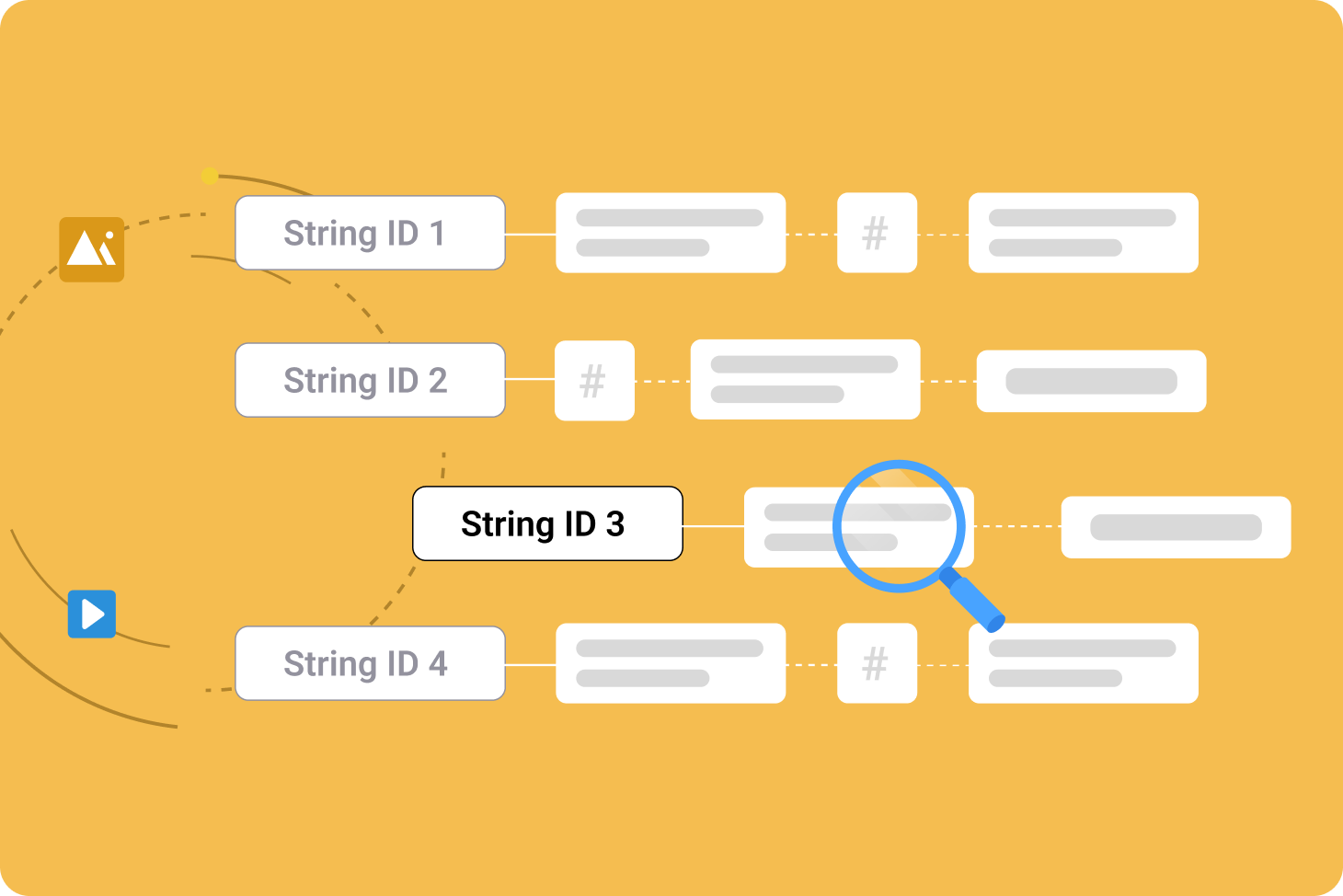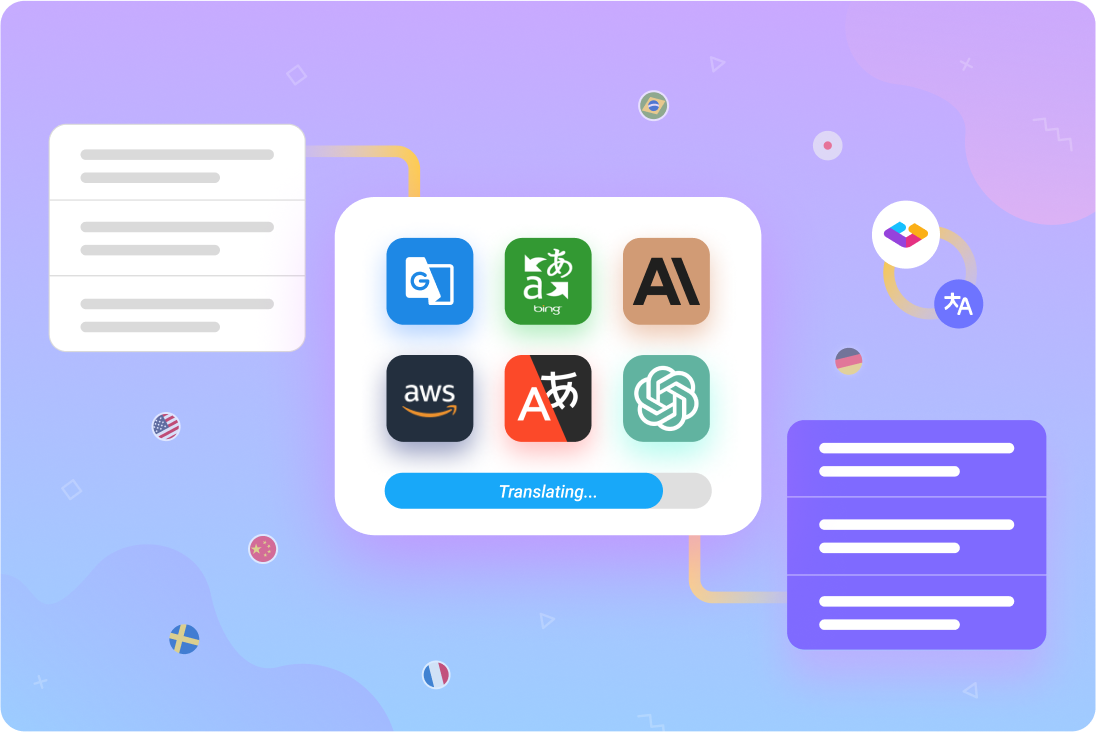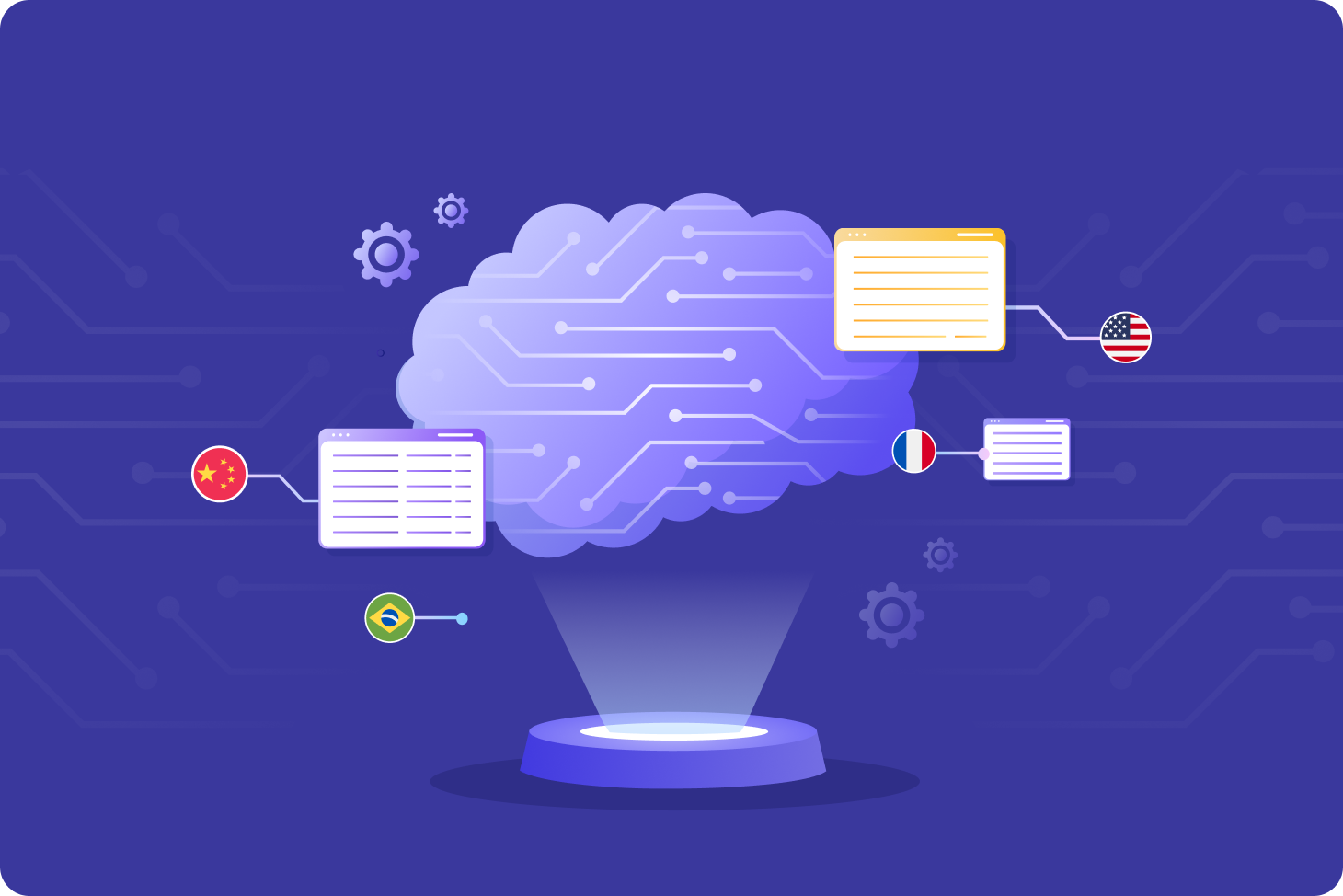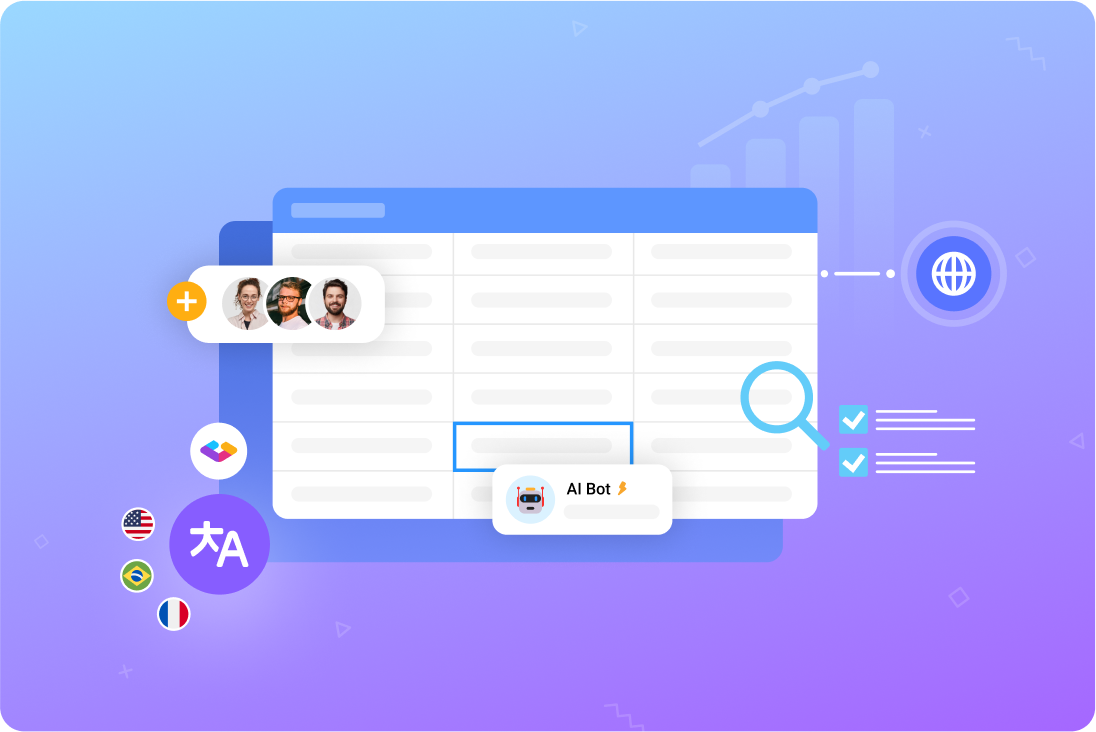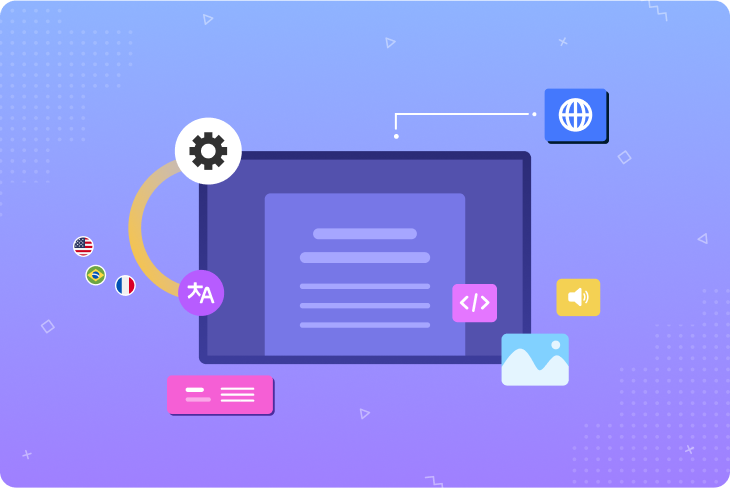What is agile content localization?
Agile content localization is the practice of localizing content as part of an ongoing software development cycle. As a mobile game, app, website, or other product is built, localization teams immediately get to work translating and localizing its content. This way, the product is ready for launch in all target regions at the same time.
>> Learn more about translating strings for software localization
Contrast agile localization with waterfall localization, which occurs at the end of the development cycle. While some teams may prefer to have all the content prepared ahead of time, the waterfall approach causes significant delays as everyone else must wait for the localization to be complete.
What are the steps in an agile localization workflow?
The following steps are the core of an agile localization process, and often happen alongside one another as various batches of content are created, localized, checked, and implemented.
- New content creation: Developers or content writers push new content into the localization management platform
- Content detection: Your localization tool automatically identifies the new content and marks it as untranslated.
- Content translation: New content is pushed into the CAT (computer-assisted translation) tools used by your translation team, either in-house or external partners.
- Content delivery: Translators push localized content back into your content management platform.
- Localization quality assurance (LQA): During the localization quality assurance stage, the localized strings are checked for quality and either approved or sent back for reworking.
- Content implementation: Approved content is pushed back into the product. There is often another round of LQA at this point to ensure the content is displayed correctly in your app, game, or website.
- User feedback: Agile localization allows you to respond to user feedback and requests with updated or adjusted content.
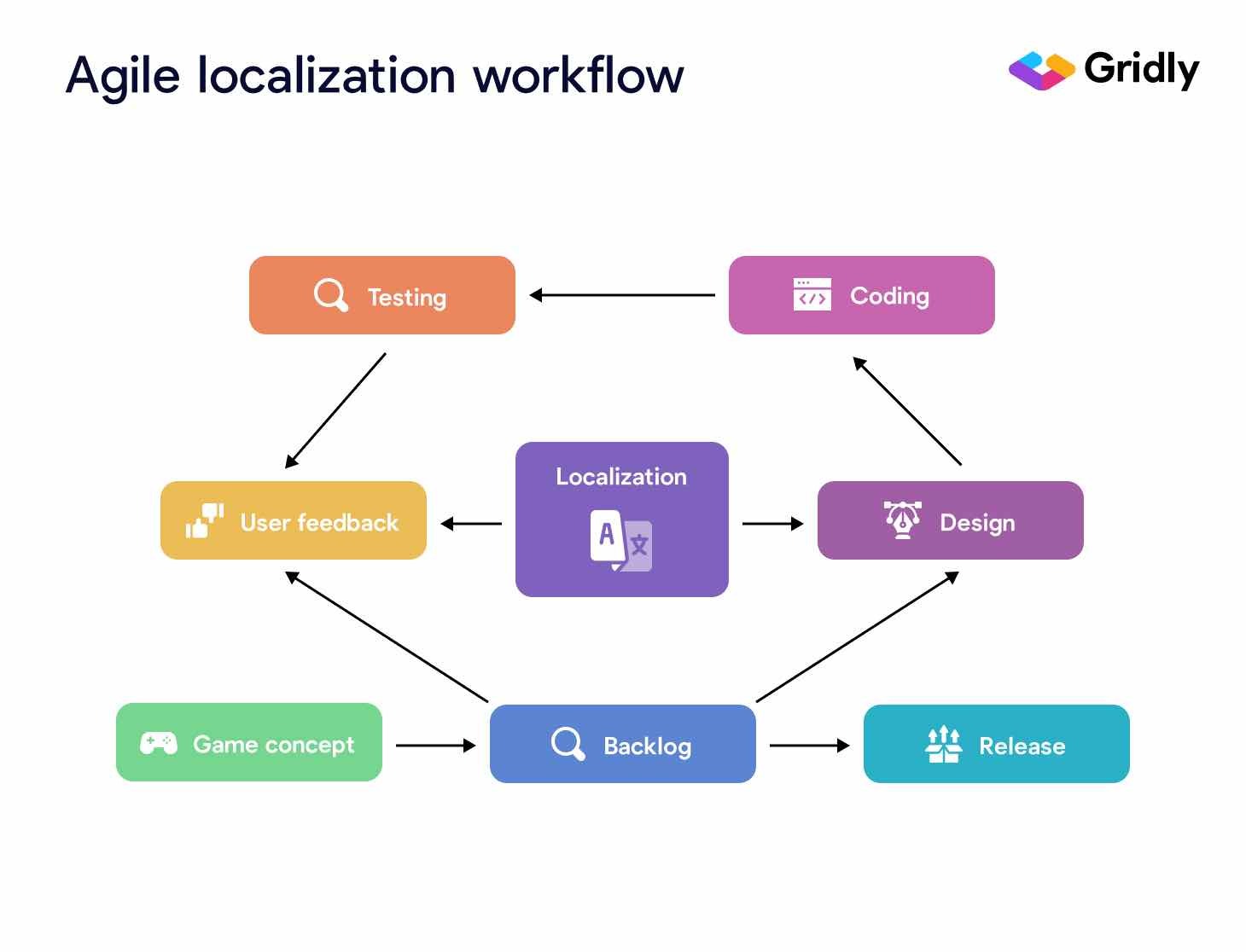
What are the benefits of agile content localization?
Localizing content alongside the development process helps you get to market faster while reducing inefficiencies in your pipeline. Here’s how:
Speed
Agile localization occurs simultaneously with product development, eliminating the delays that result from the more rigid waterfall process. You’ll get to market faster and with all your localized content ready at launch. The shortened development timeframe alone is one of agile localization’s most compelling benefits.
Flexibility
The agile workflow is centered on short batch-based bursts of work called sprints. This approach leads to an adaptive workflow that can pivot immediately to accommodate change. An agile content localization team can quickly adjust priorities and resources to overcome obstacles and meet shifting organizational goals.
Efficiency
Most agile content localization workflows leverage automation to further streamline the process. New content is automatically sent to translators, while finished versions can be instantly pushed back into the product. Developers no longer have to deal with manually exporting and importing strings into their code when your localization tools do it automatically.
How to create an agile content localization workflow
Ready to experience all the benefits of agile localization? It’s not hard to convert your team to the agile method. Just follow the steps below.
1. Establish clear pathways for collaboration
As a malleable process with many overlapping processes, agile localization requires that everyone be able to communicate smoothly with each other. While sprints are helpful in keeping everyone focused, you’ll achieve the best outcomes when you optimize your team structures for active collaboration.
Group all your localization personnel under one umbrella, as siloed teams have a tendency to isolate. Project management tools like Github, Trello, or Asana empower teams to focus effectively on priorities while keeping each other accountable.
2. Choose a content localization management platform
Optimal agile localization workflows are centered around content management platforms that give you specialized localization features not found in Excel or Google Sheets.
Look for a platform that can:
- Connect with your product as well as translation software with built-in integrations or API functionality.
- Automatically track content statuses so you know what’s done and what’s not.
- Natively support a wide range of localization quality assurance models.
- Easily support multi-step localization models with pivot languages.
- Aid translators and boost quality with localization glossaries and translation memories.
Agile localization relies on efficiency-boosting features like these to streamline your pipeline and facilitate simultaneous, asynchronous work. Make sure to dedicate the time needed to educate your team on your chosen software, so when it’s time to begin, everyone knows how to use their new tools.
>> Learn more about managing content for localization
3. Internationalize your product
Internationalization (i18n) is a pre-localization process that prepares your content to be localized. If your developers have hard-coded your text strings, they’ll need to manually import them into an external string repository instead, such as a specialized content management platform as described above.
Instead of hard-coded text, developers will use variables and tokens in their code that, depending on a user’s language preferences, automatically pull the correct string from the external repository.
4. Introduce the agile workflow
Having prepared your team, product, and workplace, it’s time to implement your agile content localization workflow. Make sure everyone understands their role in the process and how it fits into the overall pipeline. If your colleagues are new to agile work, be prepared to take more of an active role in guiding the process until everyone is comfortable with this new way of working.
5. Monitor your agile workflow with regular check-ins
One of a localization project manager’s primary responsibilities is to ensure smooth collaboration between teams. As your team adjusts to this new way of working, check in with everyone to see how they’re coming along.
Is everyone feeling comfortable with the new software? Are there any roadblocks they need help overcoming? Regular check-ins will keep you abreast of issues as they arise and enable you to refine your process and empower your team to deliver their best work as efficiently as possible.
Empower your team with the right agile localization software
As a single source of truth for all your content, your localization management platform is the linchpin of your agile localization workflow. That’s why it’s so important to choose one with the features, flexibility, and ease of use needed to fit your team.
Designed from the ground up for localization, Gridly is the ideal home for your content. Packed with helpful features and wrapped in an intuitive spreadsheet interface, it’s a powerful and flexible tool that’s as effective as it is easy to learn and use.
Ready to transform your localization team into the agile powerhouse you know it can be? Find out more about how Gridly can help.
>> Discover how Gridly can transform your localization pipeline
>> Dig into Gridly’s exciting localization-enhancing feature set

